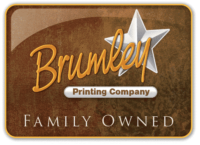 Commercial printing specifications are like the blueprint for your printing job. All printing projects are made to order.
Commercial printing specifications are like the blueprint for your printing job. All printing projects are made to order.
Why? Because each printed piece (whether it’s a book, brochure, flyer, etc) is unique and created for a specific purpose. The purpose of the piece will determine its characteristics.
Commercial printers refer to those characteristics as specifications or “specs.” They use the specs to accurately quote and print your projects. For this reason, you need to relate the correct printing specifications for your project to the printer. Otherwise, they might not be able to deliver what you were expecting.
As a starting point, the following five specifications should be prioritized.
Print Quantity
Quantity refers to the number of pieces you need. For instance, if you’re printing books, how many of the books do you need? 200? 500? The most important thing to remember here is the price per printed piece tends to go down as quantity goes up because setting up the printing job typically accounts for a significant part of the total price. So, unless you know you need a specific number of printed pieces, it’s a good idea to ask for a quote for a smaller and larger quantity and weigh the difference.
Size Specifications
You must give your printer the required dimensions so they can deliver the size you’re looking for. To avoid confusion, print dimensions begin with the width followed by the height. For instance, an 8.5” x 11” inch book will be 8.5 inches wide and 11 inches tall.
Page count
You must also tell your printer how many pages make your piece. For instance, a non-bound brochure consists of four pages i.e. the front cover, the inside front cover, the back cover and the inside back cover. For books, however, the cover is not counted. Instead, it is provided as a separate spec unless it’s a self-cover book.
Printing Paper Specifications
Thin paper is generally cheaper and may be a good option if you’re looking to save money. But when going for quality, thicker paper is recommended. Thicker paper prevents content showing through on the other side of the page. It is also more durable. Regarding type, smooth white paper stock is the default. Let your printer know if you’d like to use a different type of paper. And, of course, there are other types of printing material that might be appropriate for your project. This recent article discusses printing on plastic, and the different type of plastics commonly used by commercial printers.
Printing Ink Specs
Lastly, don’t forget to tell your printer the type of ink to be used for the job. Is the work to be produced using only black ink, the full 4-color process, one or two spot ink colors, or a combination? What of the cover? And, do you need Bleeds? All this information needs to reach the printer.
Of course, there’s a lot more to setting up a printing job, and your printer will have other questions as you place your print order. But we hope this article provides you with some of the basic information you’ll need to know to start the process.
Find out more about the commercial print specifications for your specific job. Contact Kirk Brumley or call (817) 336-5551> to schedule a free consultation. We’ll help you develop specifications that will make your print job highly successful.

